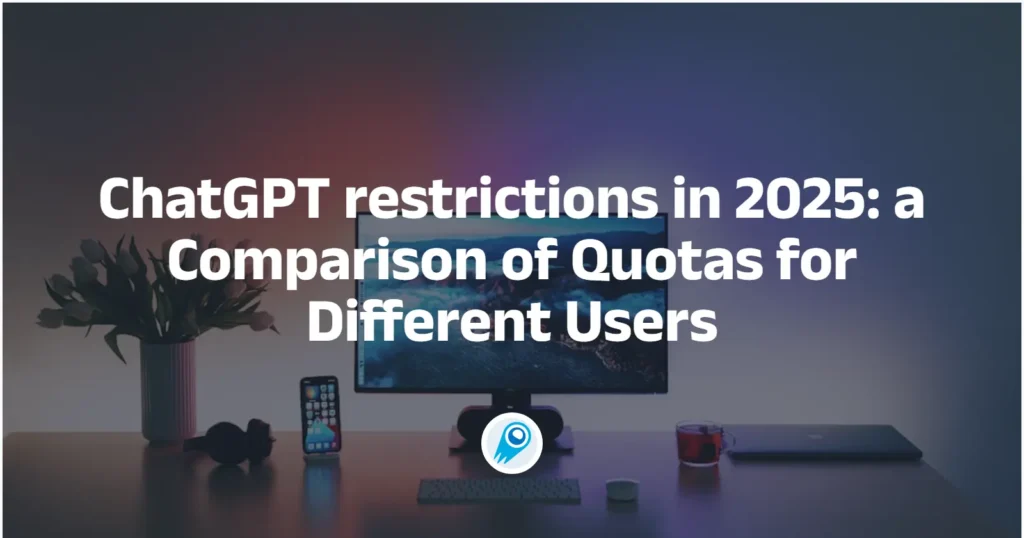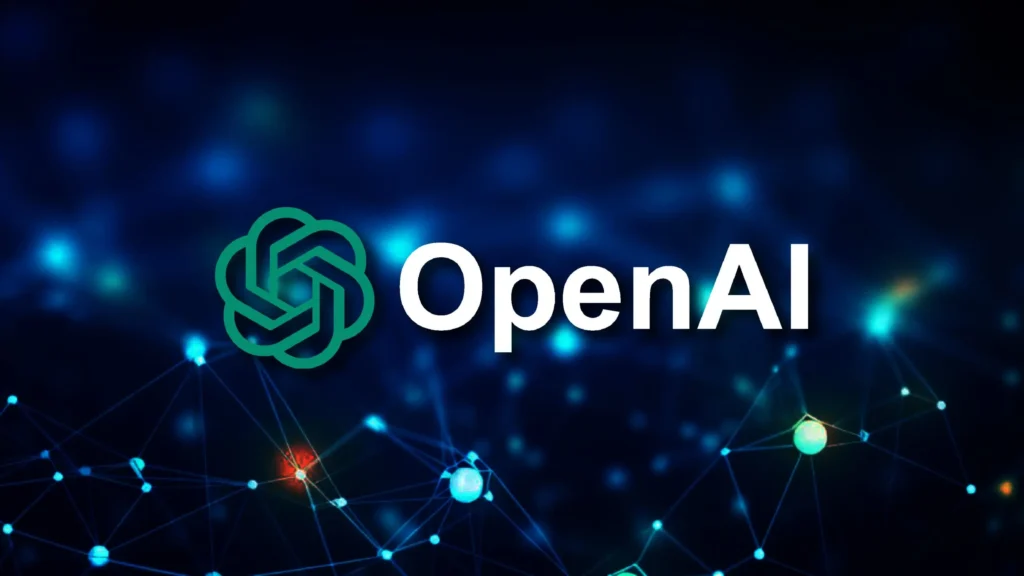A Comparison of Quotas for Users of ChatGPT restrictions in 2025

In 2025, OpenAI’s ChatGPT platform employs a tiered system of usage quotas—encompassing message caps, token/context limits, and access to advanced features—to balance user demand against infrastructure costs. Free-tier users encounter modest allowances for model interactions, context window sizes, and specialized tools, while paid subscribers enjoy expanded or near‑unlimited quotas, priority access, and enterprise‑grade capabilities. This article delivers the most complete analysis of ChatGPT restrictions in 2025, offering a comprehensive comparison of quotas for free and paid users, and equipping stakeholders with strategies to optimize their AI workflows.
What defines ChatGPT usage quotas in 2025?
Usage quotas on ChatGPT are structured around three primary dimensions: message caps, token/context‑window limits, and feature availability. These constraints vary by subscription tier—Free, Plus, Pro, Teams, and Enterprise—and by model family (e.g., GPT‑4, GPT‑4o, o3, o4‑mini).
Daily and Weekly Message Quotas
- Free users can engage with GPT‑4o mini (the lightweight “omni” variant) but are throttled to 80 messages per 3 hours, after which a cooldown is enforced to prevent server overload.Free-tier ChatGPT users are capped at 10 messages every three hours when using the GPT-4o (“o” for Omni) model—OpenAI’s flagship multimodal model—resetting every 180 minutes
- Plus subscribers receive a substantially higher allowance: 400 GPT‑4o mini messages per 3 hours, plus 40 GPT‑4 messages per 3 hours. Additionally, they gain weekly access to the o3 reasoning model (100 messages/week) and daily access to o4‑mini (300 messages/day) and o4‑mini‑high (100 messages/day) for specialized tasks.
- Pro, Teams, and Enterprise tiers largely lift these caps, offering “near‑unlimited” usage of all models with only automated abuse‑prevention checks, alongside faster queue times and dedicated infrastructure .
What role do token and context‑window limits play?
- Free tier threads are capped at 16 k tokens (≈ 12 000 words) per conversation, restricting the length of multi‑turn exchanges and document analyses.
- Plus raises this to 32 k tokens, supporting longer dialogues, code reviews, and larger-context tasks.
- Pro plans may extend context windows up to 64 k tokens, while Enterprise customers can request bespoke windows—up to 128 k tokens—for highly complex or compliance‑driven workflows .
Which advanced features are gated by subscription?
- Free users: Basic chat interfaces and a lite Deep Research agent (powered by o4‑mini) limited to 5 uses/month . No file uploads, code interpreter, or unlimited image generation.
- Plus subscribers: Full Deep Research (o3) with 10 uses/month plus 15 lightweight uses after standard quota exhaustion, unlimited DALL·E 3 generations, file uploads, code interpreter, voice mode, and custom GPT creation .
- Pro: All Plus features plus 125 Deep Research uses (standard and lightweight each), priority during peak times, and early previews of experimental tools like video generation.
- Teams/Enterprise: Administrative controls, usage analytics, SLAs, compliance certifications, and bespoke feature bundles tailored to organizational needs.
Feature Access and Integration
- Free users can leverage ChatGPT’s conversational interface but are restricted from premium functionalities like voice mode, image generation via DALL·E 3, and file uploads beyond basic text.
- Plus unlocks image inputs, voice conversations, and longer context windows (up to 128K tokens in select models).
- Pro/Team tiers expand context windows further (up to 1M tokens), integrate advanced analytics dashboards, and permit higher throughput in API calls.
- Enterprise/Education plans layer on single sign‑on (SSO), audit logs, data residency controls, and HIPAA compliance when required.
How do usage quotas vary across AI models for different users?
OpenAI’s lineup of reasoning and multimodal models has grown to include GPT‑4o, o3, o4‑mini, o4‑mini‑high, and specialized “deep research” agents. Each comes with its own quota schedule, fine‑tuned for performance and cost.
GPT‑4o and GPT‑4o Mini Limits
- Free tier: up to ~20 GPT‑4o messages/day and a similar count for GPT‑4o mini, with automatic throttling during peak load .
- Plus: 100 GPT‑4o messages/week (doubled from 50 in April 2025) and 300 GPT‑4o mini messages/day, reflecting model recency and compute demands .
- Pro/Team: approximately 250–500 GPT‑4o messages/week and 600 GPT‑4o mini messages/day, plus priority access to “o4‑mini‑high” with 100 messages/day.
- Enterprise/Education: custom SLAs often permit thousands of GPT‑4o interactions per week with dedicated capacity.
o3, o4‑mini‑high, and o1 Reasoning Models
- o3: the highest‑capability reasoning model. Free users have no direct o3 access, while Plus subscribers initially received 50 messages/week, doubled to 100/week in the April 2025 update . Pro/Team tiers enjoy 200–400 messages/week with adjustable rates via API.
- o4‑mini‑high: optimized for coding, debugging, and technical writing. Limited to 50 messages/day on Plus (upgraded to 100/day) and up to 300/day on Pro/Team.
- o1: phased out in favor of o3 and o4‑mini in early 2025; now primarily available to Pro users under specialized “ChatGPT Pro” plans at $200/month, offering “unlimited” o1 access subject to fair‑use policies .
Deep Research Tool Quotas
In February 2025, OpenAI introduced Deep Research, a web‑enabled agent that synthesizes reports in 5–30 minutes.
- Free users can perform up to 5 Deep Research tasks/month using a “lightweight” o4‑mini model variant .
- Plus/Team subscribers receive 25 tasks/month across both standard and lightweight research modes.
- Pro users enjoy 250 tasks/month, while Enterprise/Education customers soon join with Team‑level limits plus options for unlimited pipelines once usage patterns stabilize.

What recent updates have reshaped these usage limits?
Several pivotal announcements in Q1–Q2 2025 have significantly altered ChatGPT’s quota structure, often in response to user feedback and infrastructure considerations.
April 2025 Quota Increases for Plus Subscribers
On April 15, 2025, OpenAI doubled message allocations for its most popular models on ChatGPT Plus:
- GPT‑4o: 50 → 100 messages/week
- o4‑mini: 150 → 300 messages/day
- o4‑mini‑high: 50 → 100 messages/day .
This adjustment aimed to alleviate congestion during peak hours and reward paid users amid growing competition from rival AI offerings.
Rollout of the “Lightweight” Deep Research Mode
To control operational costs while maintaining quality, OpenAI launched a lightweight version of its Deep Research tool in early May 2025. Unlike the standard deep research model (exclusive to paid tiers), this cost‑efficient variant uses the o4‑mini engine, enabling:
- Free users: 5 tasks/month
- Plus/Team: Plus users also receive 10 Deep Research uses of the original tool, followed by an additional 15 uses of the lightweight version once initial quotas are exhausted
- Pro: 250 tasks/month .125 monthly uses of both standard and lightweight versions, supporting high-volume research workflows
- The lightweight mode activates automatically for paid users who exhaust their standard Deep Research allotment, ensuring uninterrupted access.
Sycophancy Rollback and Personality Tuning
In late April, OpenAI rolled back an overly flattering personality update for GPT‑4o—deployed in March—after user reports of unsettling “sycophantic” behavior. The reversal applied to both free and paid users, with plans to introduce customizable “persona” options in future releases .
What strategies can users employ to maximize their usage?
Monitor and plan usage
Users should track their consumption through the built-in usage dashboard, noting reset times (daily at 00:00 UTC for most daily quotas; weekly based on first-use date for weekly quotas) . Scheduling heavy-lift tasks—like batch coding assistance or large-scale content generation—immediately after quota resets ensures maximum throughput.
Select appropriate models
Choosing lighter models (e.g., GPT-4o mini instead of full GPT-4o) for routine tasks saves precious high-tier message credits for complex queries. Free and Plus users can lean on o1-mini or o3-mini for many reasoning tasks, reserving GPT-4o for critical multimodal or high-complexity prompts.
Upgrade strategically
Teams experiencing frequent throttles on free or Plus tiers should assess whether the incremental cost of Plus or Pro yields clear ROI—particularly when factoring in productivity gains from faster response times, higher quotas, and exclusive features like Operator and Deep Research. Enterprise clients with SLAs may leverage volume discounts and custom quota agreements to support large-scale deployments.
How do API alternatives complement ChatGPT quotas?
What advantages do pay‑as‑you‑go APIs offer?
- Flexible Billing: Pay only for consumed tokens, sidestepping fixed subscription fees.
- Higher Rate Limits: Many API endpoints permit rapid-fire calls exceeding ChatGPT’s UI quotas.
- Customization: Deploy specialized endpoints with tailored rate limits, model versions, and safety filters .
Which providers stand out?
- OpenAI API: Direct alignment with ChatGPT’s capabilities; predictable performance.
- CometAPI: CometAPI provides a unified REST interface that aggregates hundreds of AI models—including ChatGPT family—under a consistent endpoint, with built-in API-key management, usage quotas, and billing dashboards.
Conclusion
Understanding ChatGPT’s 2025 usage restrictions is vital for individuals and organizations seeking to harness AI effectively. Free users must navigate modest message caps and tool‑access limits, while Plus subscribers benefit from doubled context windows, expanded model quotas, and advanced features. Pro, Teams, and Enterprise tiers progressively eliminate these constraints, catering to high‑volume and compliance‑sensitive use cases. By employing strategic optimization techniques and considering API alternatives, users can maximize their AI investment. Looking ahead, further quota refinements and next‑generation models promise to make ChatGPT even more accessible and powerful for all.
Getting Started
CometAPI provides a unified REST interface that aggregates hundreds of AI models——including ChatGPT family—under a consistent endpoint, with built-in API-key management, usage quotas, and billing dashboards. Instead of juggling multiple vendor URLs and credentials.
CometAPI offer a price far lower than the official price to help you integrate O3 API and O4-Mini API, and you will get $1 in your account after registering and logging in ! Welcome to register and experience CometAPI.
To begin, explore the model’s capabilities in the Playground and consult the API guide for detailed instructions. Note that some developers may need to verify their organization before using the model.


